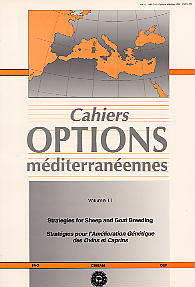| Article précédent | p. 203-210 | Article suivant |
Breeding strategy for the British sheep industry
The structure of the British sheep industry is described in terms of the breed groups dominating production, the availability of pedigree and performance data, the factors limiting genetic improvement including the key structural issues of flock size and genetic linkage. Selection objectives for the various breed groups are discussed and increased leanness identified as the most important. The Meat and Livestock Commission objectives for the GB sheep industry and its main areas of activity are outlined. Specifically the removal of technical obstacles to accelerate the pace of genetic improvement, the development of successful sire reference and group breeding schemes, and the communication of the benefits of improved stock to commercial sheep producers are discussed. Cost benefit analysis indicates a significant return on investment in BLUP technology where it is linked to sire reference schemes and wide dissemination of improved crossing rams to the commercial sector of the industry. Funding for breed improvement in GB comes from two sources; direct payments from breeders and industry support through the MLC levy funds.
- [ Afficher ]
- [ Télécharger ]
- [ Exporter la citation ]
Vous pouvez télécharger la citation au format :
- [ Imprimer ]
-
Mots-clés
AMELIORATION DES ANIMAUX, OVIN, ROYAUME UNICiter cet article
Croston D Breeding strategy for the British sheep industry. In : Gabiña D. (ed.). Strategies for sheep and goat breeding . Zaragoza : CIHEAM, 1995. p. 203-210. (Cahiers Options Méditerranéennes; n. 11). Meeting of the joint FAO/CIHEAM Network on Sheep and Goats, Subnetwork on Animal Resources, 1995/03/26-28, Sidi-Thabet (Tunisia). http://om.ciheam.org/om/pdf/c11/96605557.pdf



